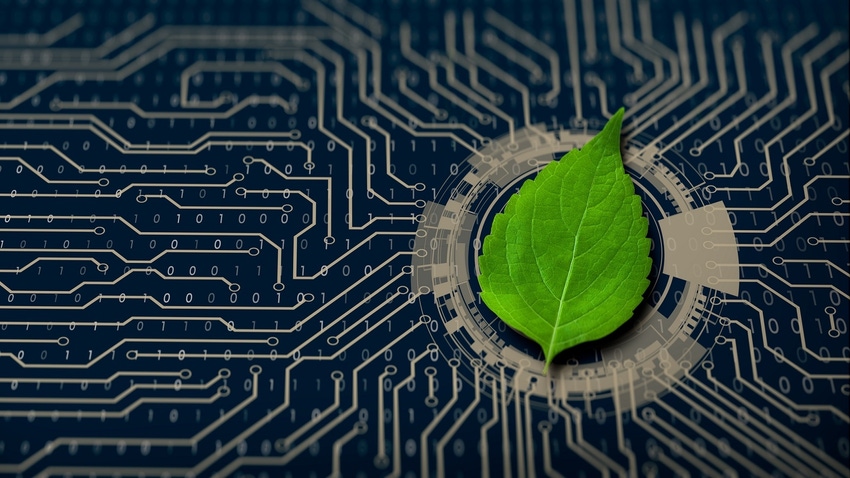Are Bio-Plastics the Future of Electronics?
Incorporating bio-circular plastics into electronic components is a positive step towards sustainability.
December 15, 2023

At a Glance
- Sustainability in electronics
- Emerging bio-plastics
In recent years, there has been a significant push across various sectors, including the electronics industry, to adopt more sustainable and environmentally friendly practices. As we continue this long journey, there is an increasing number of companies committing to reducing their reliance on fossil-based plastics and boosting recycling. This trend holds within the electronics industry. So, let’s explore the implications, challenges, and potential solutions for incorporating bio-plastics into the electronics industry’s circular economy efforts.
The Circular Economy Goals
In an era of growing environmental consciousness, companies across all industries are re-evaluating their practices and pursuit of sustainability goals – the TDK group companies are no exception. Committed to minimizing its environmental impact, the group has been on a journey to develop components and manufacturing processes that align with sustainability principles. The company has been optimizing its production processes to minimize power consumption as well as self-generating electricity at its facilities worldwide via solar panels.
One of the key factors is the International Sustainability and Carbon Certification (ISCC) for its manufacturing facility in Málaga, Spain. The operation complies with the Renewable Energy Directive and the Fuel Quality Directive of the European Commission. The company’s adherence to ISCC standards underscores its commitment to responsible sourcing of raw materials, energy efficiency, and environmental stewardship throughout the manufacturing process.
The linear ‘take-make-dispose’ model is not sustainable in the long term. Instead, a closed-loop model minimizes waste and resource depletion, where components are designed, manufactured, used, and then recycled or repurposed. One aspect of TDK’s sustainability goals is to decrease its dependence on fossil-based materials, such as plastics. The company invests heavily in research and development (R&D) and works with suppliers to identify and integrate sustainable alternatives that offer comparable performance while being more environmentally friendly.
This ongoing commitment to sustainability has led to a groundbreaking collaboration with The Borealis Group, which has opened a new avenue for TDK to explore bio-plastic materials and revolutionize its product offerings. One of the critical aspects of this collaboration was finding bio-circular materials that matched the performance characteristics of the polypropylene film currently used as the dielectric on its ModCap series of DC-link capacitors.
What Are Bio-Plastics?
Because of its environmental impact, the global plastic sector has been under increased criticism in recent years. Traditional plastics, primarily derived from fossil fuels, have raised concerns about resource depletion, carbon emissions, and plastic pollution. To address these issues, the development and adoption of bio-plastics have emerged as promising alternatives. Unlike traditional ones, bio-plastics are a type of material derived from renewable sources, and they can be categorized into two main types: first-generation and second-generation polypropylene.
First-generation bio-plastics are produced from renewable raw materials from agricultural crops grown for food and livestock feed. Common sources include crops like corn, sugarcane, and potatoes. While first-generation bio-plastics provide a sustainable alternative to standard plastics, they are not without problems. One of the main concerns is the potential risk of diverting agricultural resources away from food production, which could result in increased food prices.
In contrast to first-generation bio-plastics, second-generation materials, also known as bio-circular plastics, exclusively use waste and residues as their renewable raw materials. These materials are sourced from various industries and post-consumer sources. From the production of vegetable oil, the paper and pulp industry, or used cooking oil, for example.
The bio-plastics industry is therefore favoring second-generation polypropylene as it minimizes the ethical concerns associated with first-generation bio-plastics. Moreover, second-generation bio-plastics use materials that would otherwise go to waste, offering a more circular and sustainable approach to plastic production.
Supporting the Green Economy
ModCap capacitors have long been valued for their exceptional performance in the DC link of traction and industrial motor drive applications, offering high capacitance and robust reliability. However, their versatility and durability make them equally suitable for various green applications, including energy storage, solar energy generation, and electric vehicle (EV) chargers.
Manufacturing more sustainable ModCap capacitors positions TDK as a vital enabler of sustainable technologies. By providing high-performance capacitors that support energy efficiency and clean energy generation, the company is empowering its customers to reduce their environmental footprint and transition to more sustainable practices.
Even Small Steps Are in the Right Direction
Although these bio-plastic materials are currently suitable for specific applications, such as the dielectric on the ModCap series, and face supply-demand challenges that contribute to relatively higher costs, a promising shift is underway. However, that will change positively as more electronic component manufacturers look to replace fossil-based plastics with equivalent bio-circular materials.
Electronic components like ModCap capacitors must meet strict industry standards, such as UL 94V-0 for flame resistance and EN 45545-2HL2 and R22-HL3R23 for fire and smoke safety in railway applications. Developing bio-circular materials that pass these standards, also for the case and the cover as well as for non-PCB polyurethane resin to protect the winding, is a complex task.
Incorporating bio-circular plastics into electronic components is a positive step towards sustainability. While there are challenges to overcome, with the right research, collaboration, and consumer engagement, these materials can play a significant role in reducing the industry's environmental impact. As the bio-plastic journey unfolds, we can look forward to a future where electronics are advanced in performance and harmonious with the environment.
You May Also Like


